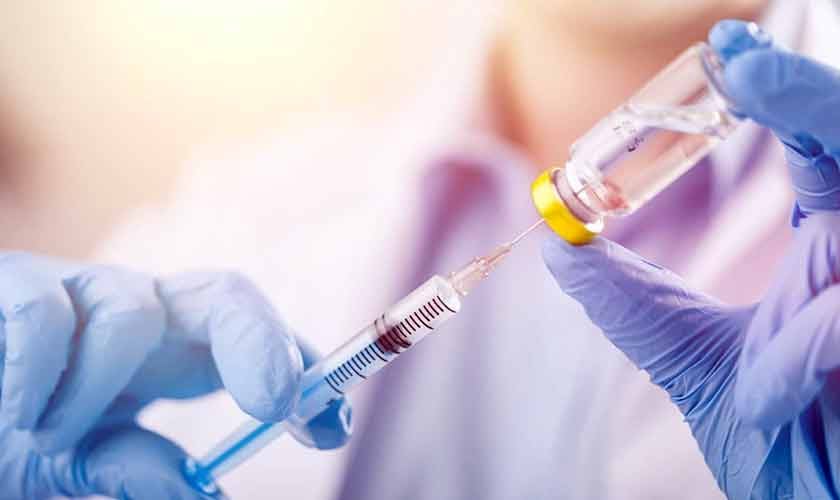**World Rabies Day: Highlighting the Urgent Need to Control Rabies in Pakistan**
World Rabies Day, observed annually on September 28, highlights the urgent need to control this deadly yet preventable viral infection. In Pakistan, according to government data, 2,000 to 5,000 rabies-associated deaths occur annually, mostly due to dog bites and lack of timely medical intervention. The actual number is believed to be even higher.
Street dogs significantly contribute to this public health challenge. Pakistan has a large population of stray dogs roaming both urban and rural areas. Compounding this issue is the fact that rabies vaccines and immunoglobulins—life-saving injections given immediately after exposure—are not always easily available in public hospitals. Consequently, people often have to turn to private labs and hospitals for costly treatment.
In rural areas, where dog bites are more common than in cities, the nearest medical center may be several hours away, making victims vulnerable. Poverty, lack of awareness, and limited education further worsen the problem, as many families are unable to afford the full course of vaccination or are unaware of its importance. Additionally, some dog-bite cases go unreported due to the social stigma attached to animal bites.
—
### Understanding Rabies
Rabies is a viral disease transmitted from animals to humans, primarily through bites or scratches. Around the world, dogs, bats, foxes, and badgers are common reservoirs of rabies in different ecosystems. A single bite from a rabid animal can be fatal. Even without a bite, scratches contaminated with saliva can transmit infection.
Once symptoms appear, rabies is almost always fatal. Early signs, whether in humans or animals, include fever, nausea, vomiting, diarrhea, runny nose, light sensitivity, muscle cramps, and loss of appetite. Aggression, restlessness, and fear of water (hydrophobia—a classic sign) may also be present.
—
### Immediate Steps After a Dog Bite
Anyone bitten or scratched by a suspected rabid animal must immediately wash and flush the affected area with soap and water for at least 15 minutes. If available, 70% alcohol/ethanol or povidone-iodine should be applied to the wound.
Healthcare providers must examine and correctly categorize the wound as follows:
– **Category I:** Licking of intact skin — no vaccination required.
– **Category II:** Nibbling or minor scratches without bleeding — vaccination required.
– **Category III:** Transdermal bites/scratches or mucous membrane exposure — requires both vaccine and immunoglobulin.
Keep the wound open and avoid tight bandaging. For large wounds, loose stitches may be applied on days 3 to 4.
Patients must be strictly advised **not** to use home remedies such as chili powder, acids, or plant juices, nor should they turn to traditional healers, as these have no role in preventing or curing rabies.
—
### Observation and Follow-up
It is important to observe the dog that has bitten the patient for 10 days after the bite to determine if it was infected with rabies. If the animal remains healthy and alive, it was not infectious at the time of the bite.
If the animal dies, becomes sick, or is lost during this period, the patient must continue or complete post-exposure prophylaxis (PEP) as per protocol.
—
### Prevention and Public Awareness
Rabies is 100% fatal once symptoms appear but also 100% vaccine-preventable. Public health education about seeking immediate medical care after bites or exposures to saliva, rather than engaging in unsafe practices, is urgently needed.
Schools and colleges should run public awareness programs promoting humane strategies instead of dog abuse, which can increase bite risks. It is important to emphasize that stray dogs, though they may appear harmless, pose a deadly risk as rabies carriers; therefore, people should avoid contact with stray or wild animals.
Every union council (UC) in major cities must implement effective and sustainable control measures such as stray dog birth control and vaccination programs. UCs should encourage the public to report any sightings of rabid animals to local authorities promptly.
Pet owners must ensure their dogs are fully vaccinated before contact with others.
—
### Special Considerations for Rural Areas and Professionals
In villages, dairy product handlers should be informed that although milk or meat from a rabid cow is not harmful, they must avoid contact with the cow’s foaming saliva, which could penetrate any wounds on their body.
Pre-exposure prophylaxis (PrEP) is recommended for travelers visiting rabies-prone areas and for professionals who handle animals regularly.
—
### Rabies Vaccination Protocols
The World Health Organization (WHO) recommends pre-exposure prophylaxis as two 1 mL doses of rabies vaccine given intramuscularly, one injection per day, on days 0 and 7. Adults receive the injection in the deltoid area; young children receive it in the anterolateral thigh.
Pre-exposure prophylaxis does **not** eliminate the need for post-exposure prophylaxis. Anyone exposed to a suspected rabid animal must still receive appropriate post-exposure care.
—
### Post-Exposure Prophylaxis (PEP)
Independent data from Pakistan show that over 100,000 people receive rabies post-exposure prophylaxis annually. The older vaccination schedule involved 14 injections, but now two vaccine types are available:
– **Intramuscular vaccine:** 1 ml at a single site on days 0, 3, 7, and 14. It should **not** be administered in the gluteal area. Immunocompromised patients may also receive an additional dose on day 28.
– **Intradermal vaccine:** 0.1 ml at two sites on days 0, 3, 7, and 28. For children under two years, the injection is given in the anterolateral thigh.
For all Category III exposures, administer Human Rabies Immunoglobulin (HRIG) infiltrated as much as possible into and around the wound. The remainder is given intramuscularly at a different site.
Immunoglobulins available include:
– **Human Rabies Immunoglobulin (HRIG):** 20 IU/kg
– **Equine Rabies Immunoglobulin (ERIG):** 40 IU/kg (cheaper and equally effective; preferred in underdeveloped countries)
Use an insulin syringe to infiltrate around the wound. For multiple wounds, dilute the immunoglobulin in saline.
If a fully immunized patient suffers a dog bite, booster doses are given on days 0 and 3 at one site, whether intramuscular or intradermal. Patients with incomplete vaccination—either pre-exposure or post-exposure—must receive the full PEP course.
—
### Local Developments
Dow University of Health Sciences has imported a molecule from China and developed a rabies vaccine locally this year. However, it still awaits approval from the Drug Regulatory Authority of Pakistan for commercial use.
—
### Conclusion
Rabies is 100% fatal once symptoms appear but also 100% vaccine-preventable. Timely wound care, vaccination, immunoglobulin administration, and responsible interaction with animals can prevent needless loss of life.
Prevention and early intervention must be prioritized to protect people from rabies. Awareness, education, and adequate healthcare access remain the keys to winning the battle against this deadly but preventable disease.
https://www.thenews.com.pk/tns/detail/1346841-protecting-communities-preventing-deaths

